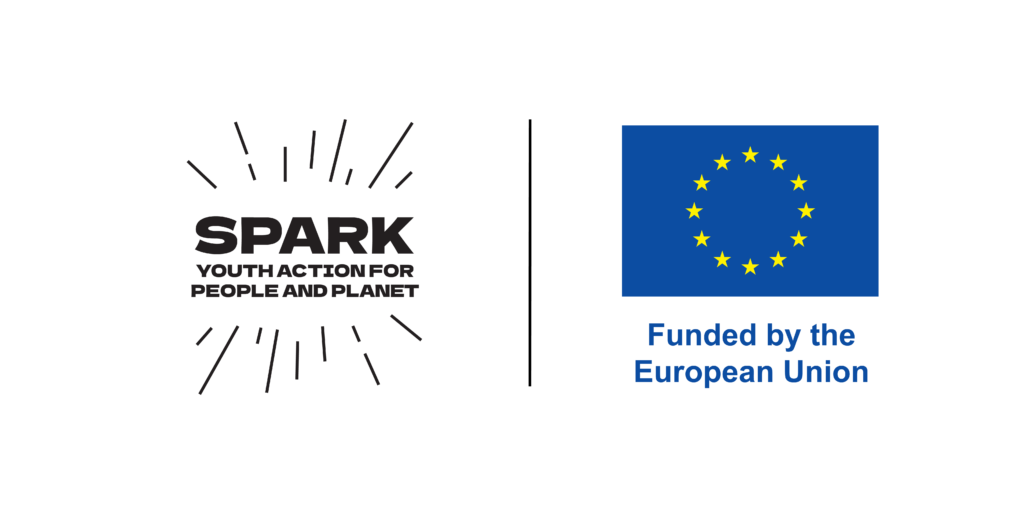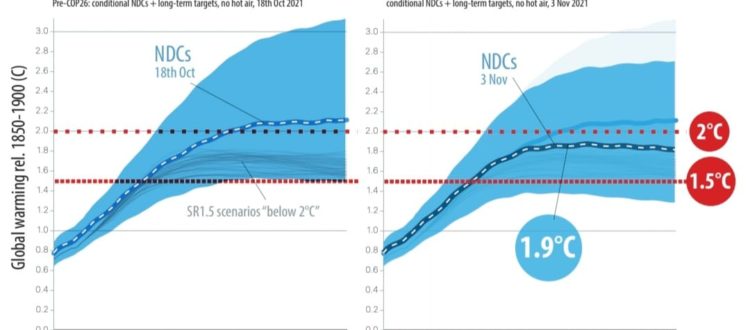COP26: TOWARDS THE SECOND WEEK
With the commitments made by countries during the first week of COP26, for the first time one of the two goals of the Paris Agreement – to keep the increase in global average temperature within +2°C by the end of the century compared to pre-industrial levels – could be met.
The announcements have been followed by analysis on their impact. From what has been published in recent days by the International Energy Agency, Climate Analytics, Science, Climate Resource (among the main sources), the new commitments would lead to a peak increase in average temperatures of +1.9°C and then fall to +1.8°C right at the end of the century.

However, we are still a long way from meeting the other Paris Agreement goal, i.e. limiting temperature increase to within +1.5°C, the same goal that the most polluting countries committed to during the G20 meeting at the end of October. From the available projections, the probability of an average increase in temperatures above +1.5°C is still 90%, above all because the commitments made or announced are long-term, while to meet this more stringent goal it would be necessary to begin immediately to drastically reduce emissions of greenhouse gases. Looking at 2030 as an intermediate step, it emerges indeed that the gap between what needs to be reduced and what has been promised still amounts to 70% with respect to projected emissions.
With all the caveats of the case, the return of a scenario below +2°C is, however, historic news, as the analysis of the NDCs presented until the beginning of October indicated a very different trajectory, leading towards an average temperature increase of +2.7°C. The new commitments, however, must now be put into practice as soon as possible in order to turn the predictions into reality.
Here are the main commitments made by some countries during the first week of COP26:
- NET ZERO: China and India have committed to reach net zero emissions by 2060 and 2070, respectively.
- NEW NDCs: 11 countries updated their NDCs enhancing ambition.
- -30% METHANE EMISSIONS BY 2030: About 100 countries are now part of the Global Methane Pledge, proposed by the EU and USA to reduce methane emissions by 30% below 2020 levels by 2030.
- STOP DEFORESTATION: 110 countries have joined the Glasgow Leader Declaration on Forest and Land Use to stop deforestation by 2030.
- STOP NEW OVERSEAS INVESTMENTS IN OIL&GAS: some countries and financial institutions (including USA, Canada, EU, European Investment Bank, and East African Development Bank) have decided to stop public subsidies to new foreign investments in fossil fuels (if not compensated by capture and storage) by 2023; Italy signed at the last moment.
- STOP TO NEW COAL POWER PLANTS: some countries (notably Chile, Germany and Poland, among others) signed a multilateral agreement to phase out coal power in the 2030s – for developed countries – or in the 2040s – for developing ones -. This implies the stop to new power plants, both domestically and abroad. However, USA, China and India have not joined the agreement.
It is important to remember that the commitments listed above have been made by some groups of countries only, and not all UNFCCC signatories. The impact of the measures illustrated can therefore be more or less relevant depending on which countries have adhered and which have not. On this, as well as on the British and Italian positions, we wrote a few days ago.
In addition to multilateral commitments and the pledges of specific countries, technical negotiations continued.
The first week ended with a long final plenary on Saturday evening (November 6), which lasted until over midnight. It emerged that despite timid progress on many issues, much remains to be done in the second week. In many cases, there will be an attempt to solve long-standing discussions through the political momentum that traditionally characterizes the second week of negotiations, when the arrival of national Ministers usually lead to negotiating breakthroughs.
Climate finance, Article 6 and market mechanisms, transparency and the timeframe of NDCs are among the topics on which, in the opinion of many negotiators, an agreed solution can only be reached through political agreements. Basically, all the hot topics of this COP26.
It is worth noting that negotiators involved in the topics of finance and transparency have highlighted the need to continue with technical negotiations at least for a few more days before passing the draft texts to the Ministers, so as to better refine the various options currently on the table.
by Francesca Casale, Italian Climate Network Volunteer at COP26 and Jacopo Bencini, Policy Advisor and UNFCCC Contact Point
You are reading this ICN COP Bulletin article as part of the EC DEAR SPARK project. Marirosa Iannelli, Coordinator of the Climate & Advocacy Department of ICN, overviews this activity. ICN monitors negotiations and reports what is happening in Italian and English, on our website and on social channels, as part of a pan-European consortium of over 20 non-profit organizations committed to promoting climate awareness with particular attention to the role of young people and issues related to international cooperation and gender policies.


